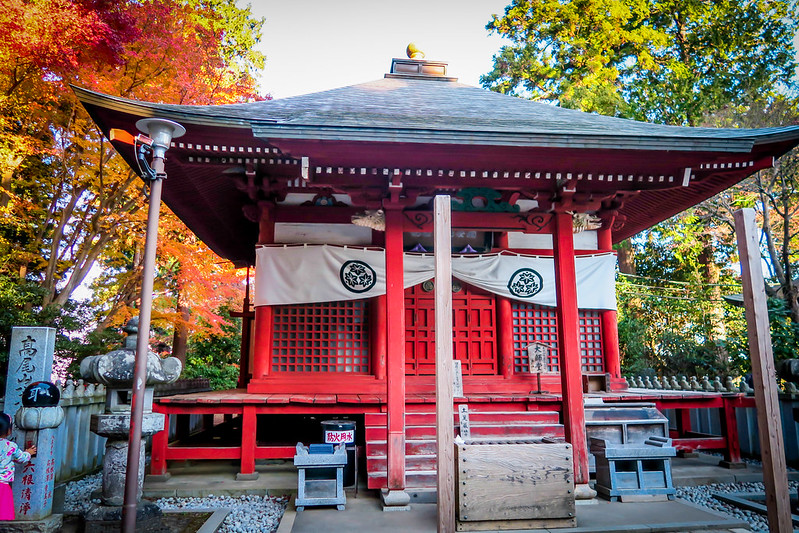
The One about Mount Takao in Hachioji Part 8 – Head Temple Takao-san Yakuo-in
The One about Mount Takao in Hachioji Part 4 – The Mount Takao Monkey Park and Wild Flower Garden
The One about Mount Takao in Hachioji Part 3 – What to do at Kiyotaki Station
The One about Mount Takao in Hachioji Part 2 – On the Way to Kiyotaki Station
The One about Mount Takao in Hachioji Part 1 – Arriving at Takaosanguchi Station
After leaving the main hall, there really is one way to go aside from backwards or sideways back to the side halls.
Because going sideways is on the same level, it’s easier to visit the Daishi-do Hall from here. So, proceed to the right and head back to this stairs location later.
The Yakuou-in Daishi-do Hall is rather interesting. There are no records on when this hall was constructed but it is presumed that Taishi-do burned down in a fire back in 1677 and was reconstructed later. Knowing that the fire of Yakushi-do happened in 1677, it’s assumed that this rebuild was in the middle Edo period, judging from the style and techniques of the architecture used.
The techniques used feature carving patters on the step canopy, a rainbow beam, kibana (nosing attached to the ends of the beams) and shrimp-shaped rainbow beam, are older styles than the one of the construction period.
According to Shinpen-Masashifudokiko, Taishi-do, was previously known as “Dainichi-do” and was located opposite of Yakushi-do and faced the south. It was repaired three times before being relocated to its current place.
The reason why this building is historic (designated as a Tangible Cultural Property of Tokyo) is because of the architectural style of shrines and temples made during the middle of the modern period.
Daishi-do Hall has a 1-bay wide Naijin (the inner sanctum) and two altars in the back. The roof is pyramid shaped with copper sheeting.
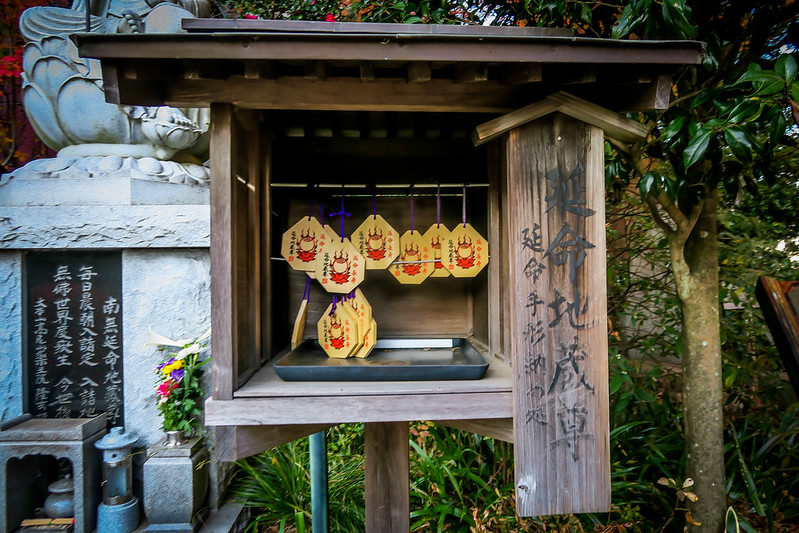

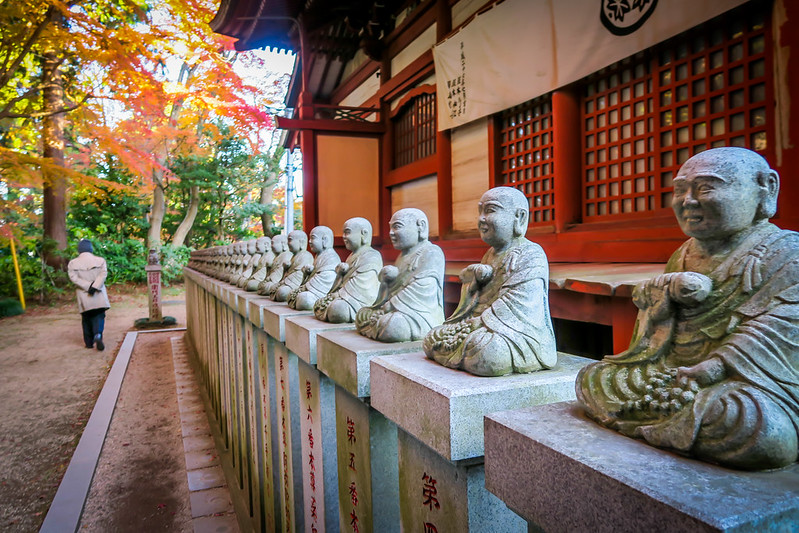
Probably the most fascinating about Yauou-in Daishi-do Hall is the row of statues, lined up throughout the side.
While you can see Jizo statues around the premises, it’s these statues on the side of the Hall that I found most interesting.
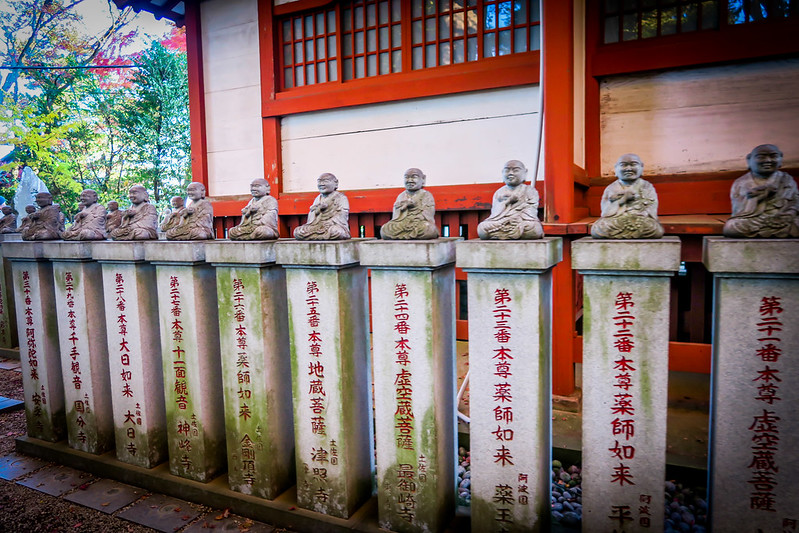


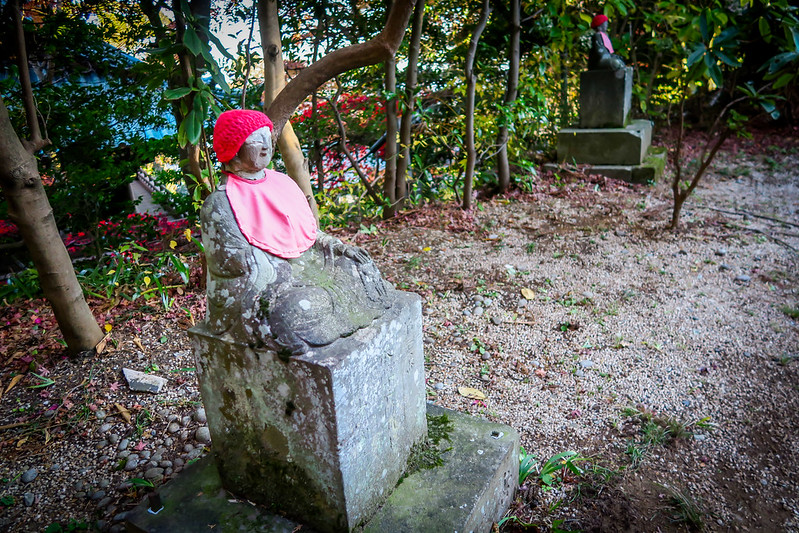

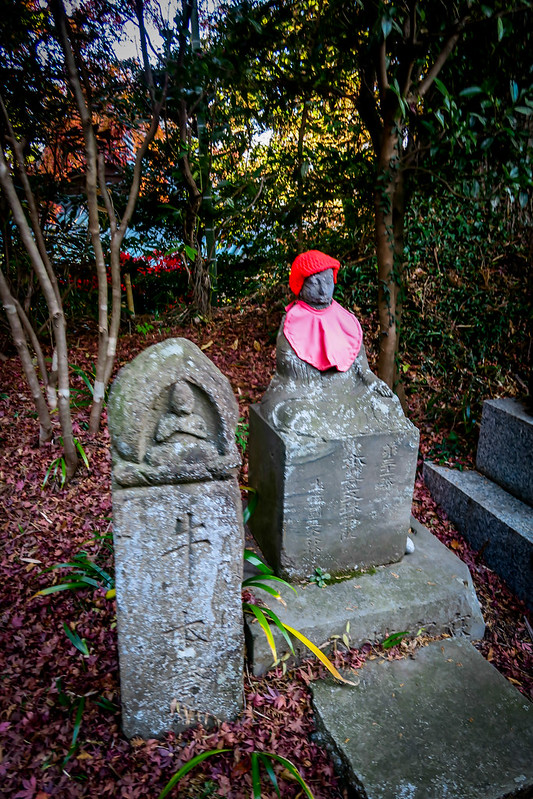

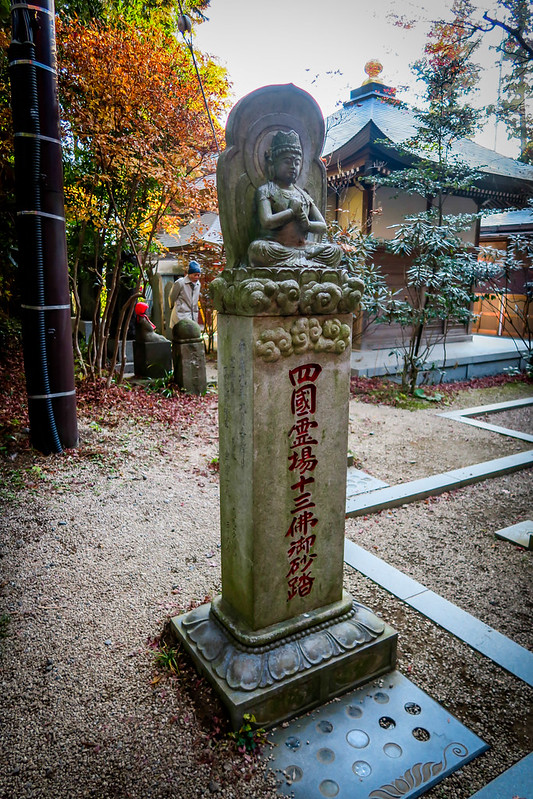
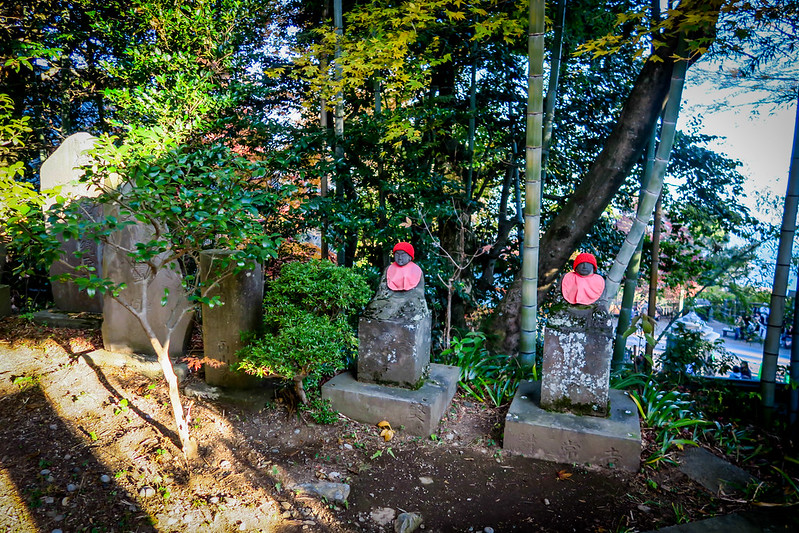
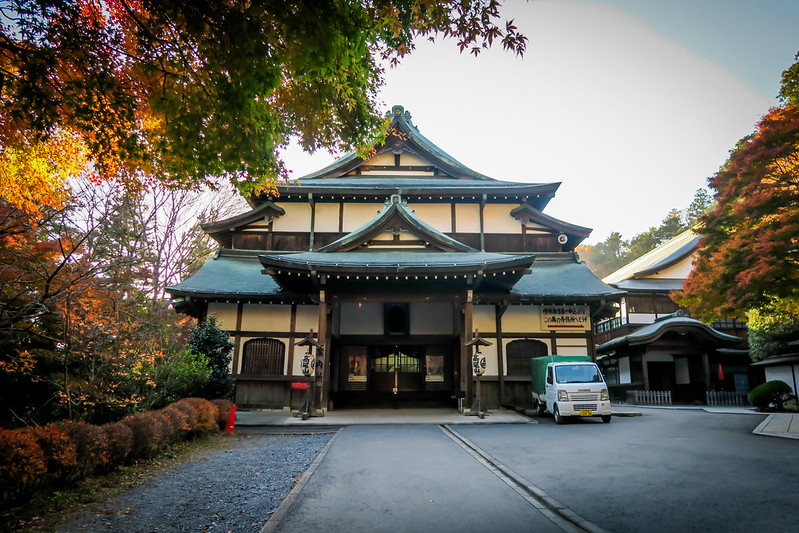
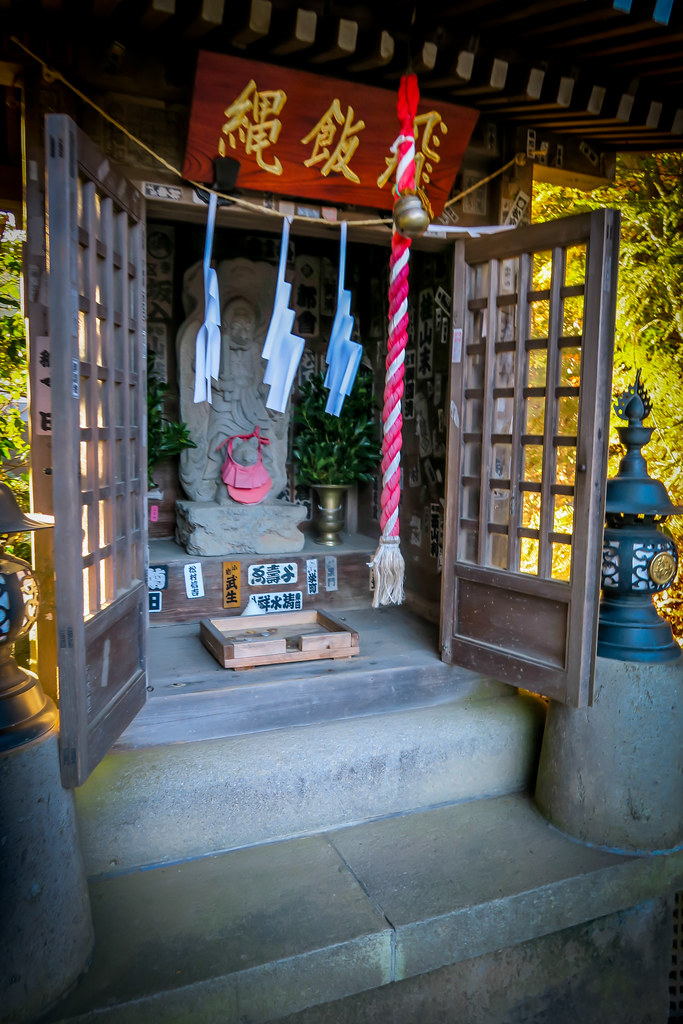
Now, let’s head back past the main hall and get ready to go up the big stairs heading to the Izuna Gongen-do Hall. You will then be greeted with many statues on top of land. You will see another flight of stairs right afterward. Let’s go up!
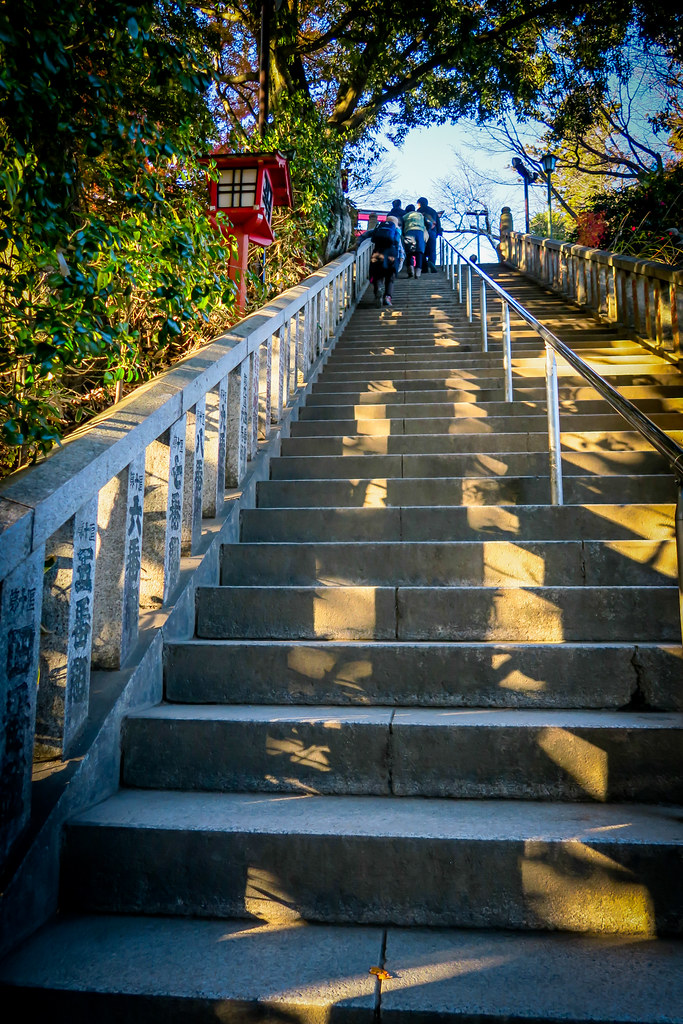
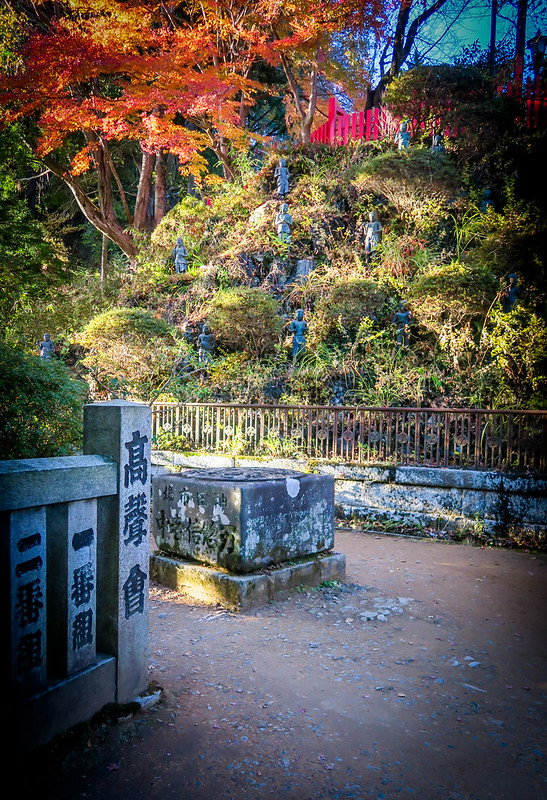

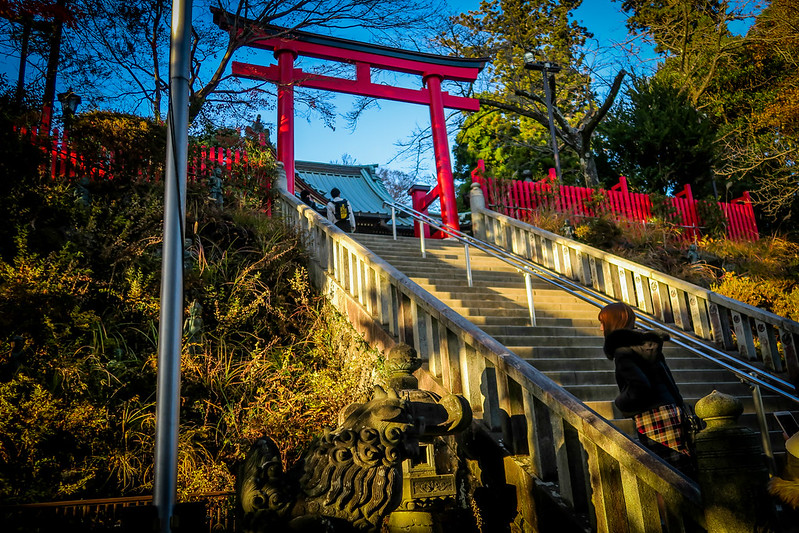
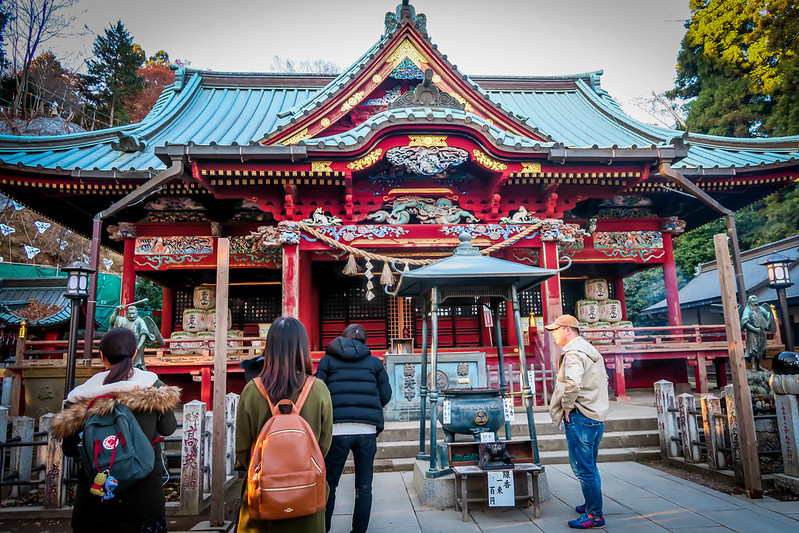
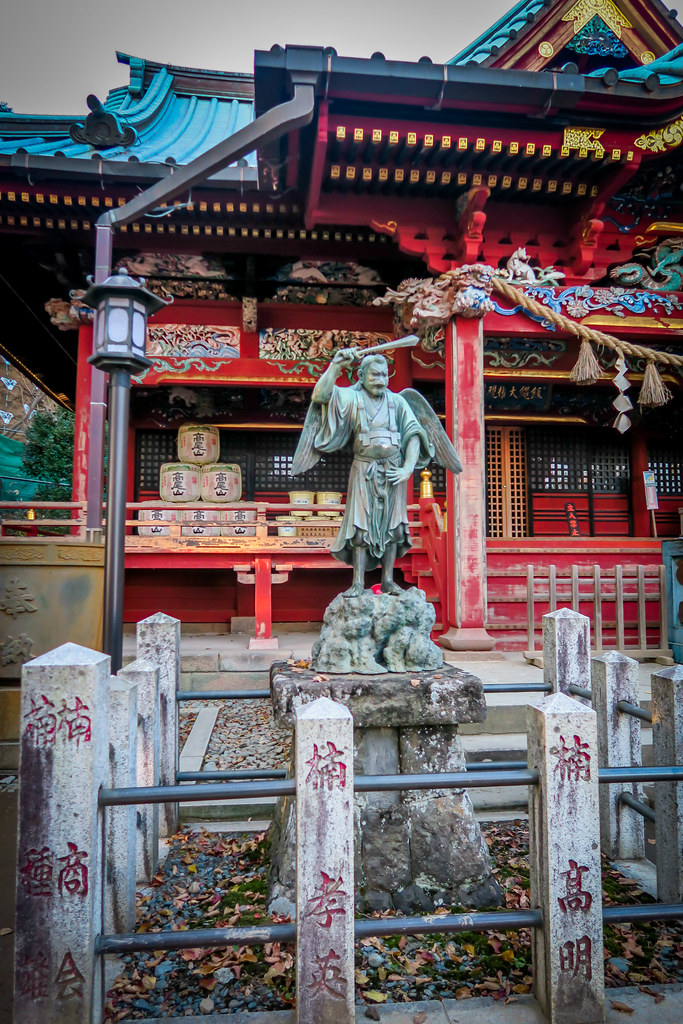
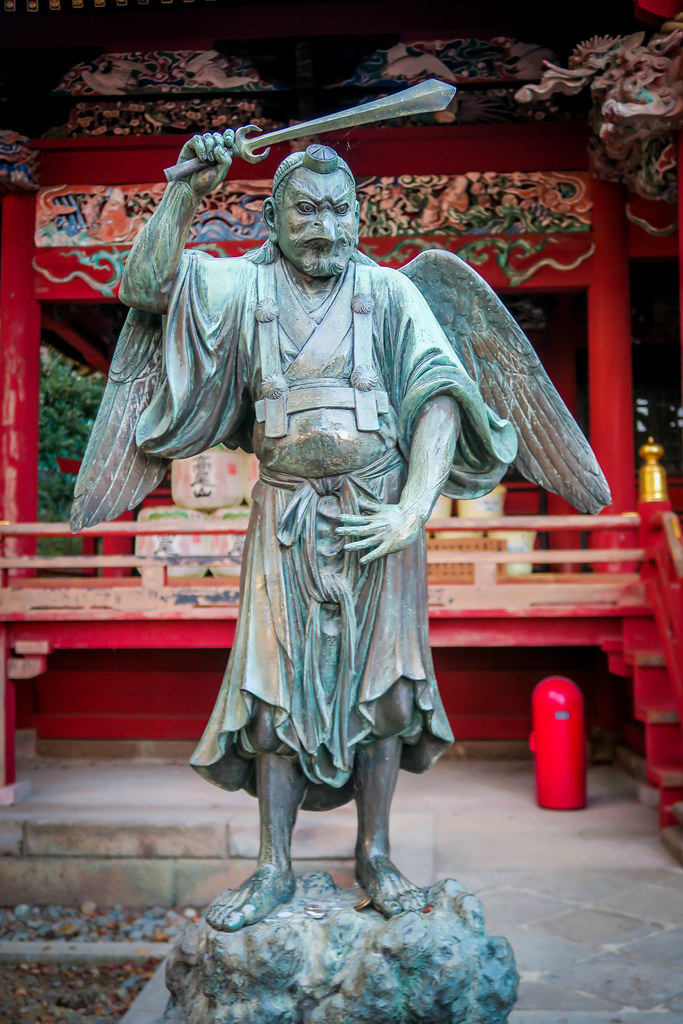
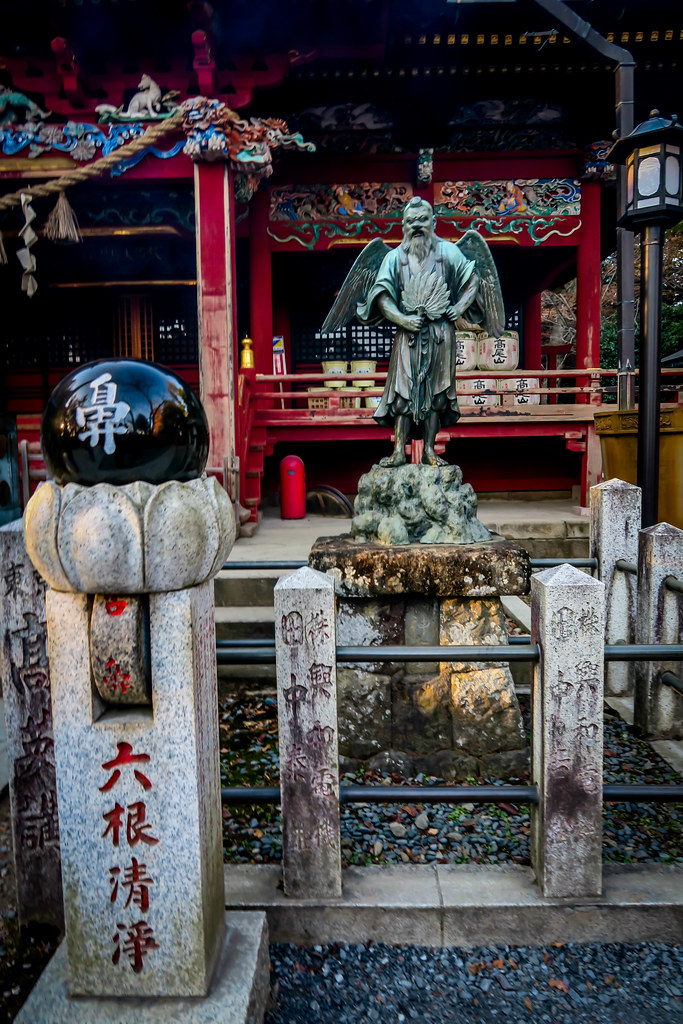
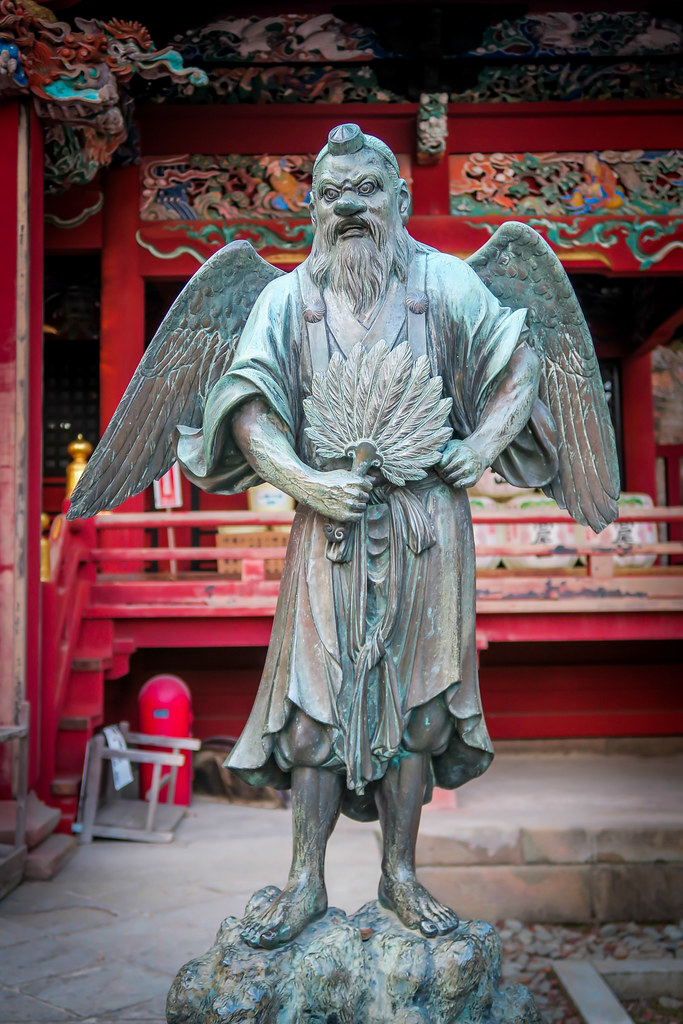
You have now arrived at Izuna Gonge-do Hall. And remember how after the Shitenno-mon gate had the two Tengu statues once you get inside?
Well, Izuna Gongen-do Hall is known for its two Tengu statues as well and those two statues caught my attention.
A sign from the Tokyo Metropolitan Board of Education states that according to Yauou-in Engi, Yakuou-in started when Gyouki enshrined a Yakushi Nyorai statue by the Emperor’s order in 744. It is believed taht a prist, syungen, enshrined Izuna deity (statue) between 1375 and 1379 which led to increased religious influence of Takao-san (or Yakuou-in).
The ridge tag shows that Honden was built in 1729 and HAiden and Heiden were constructed in 1753. It is presumed that Houden was an indepenent building around that time. But when repair was conducted in 1805, the roofs of Honden and Heiden were connected, creating teh current Gongen-zukuri. Haiden is a one-story wooden structure.
It has a hip-and-gable roof with copper sheeting and is 3-bays wide with eaves around. A veranda surrounds the building and Kumimo (Bracket complex) and carvings on the building have brilliant colors. These Kumimono and carvings show high techniques in shrine decoration of the middle of the Edo period.
This Izunagongen-do was designated a Tangible Cultural Property of Tokyo as it is another example of excellent Gongen-zukuri architecture built around that time.
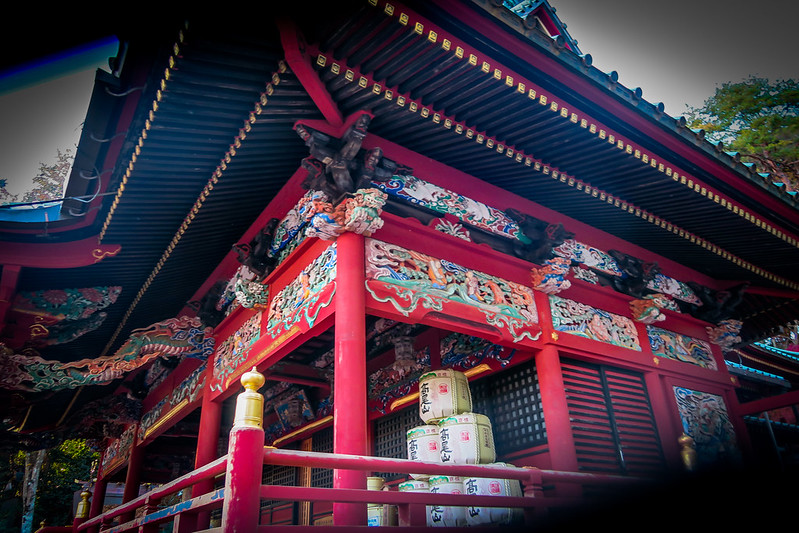
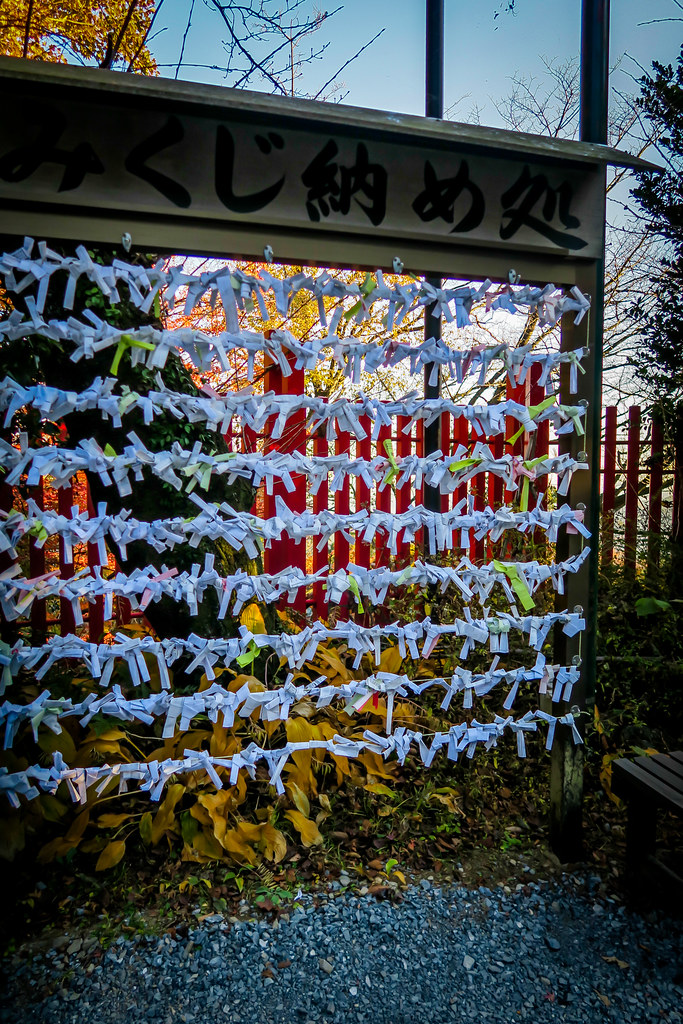
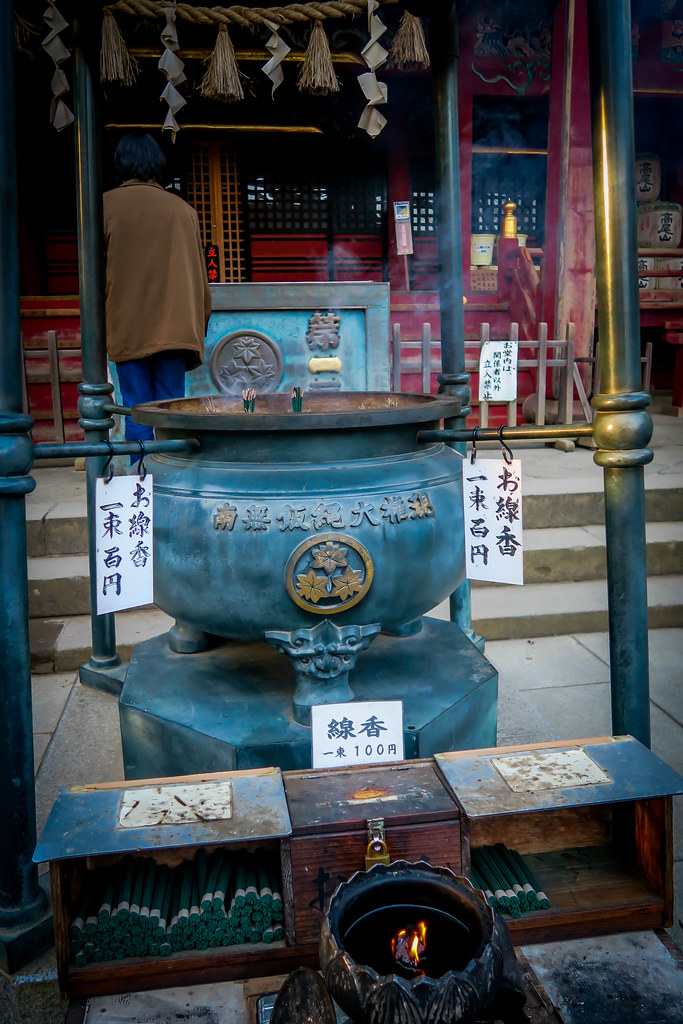
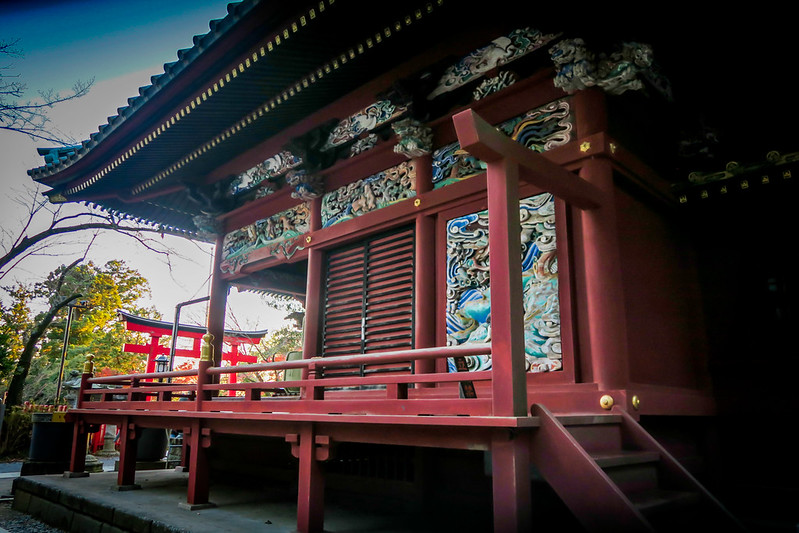
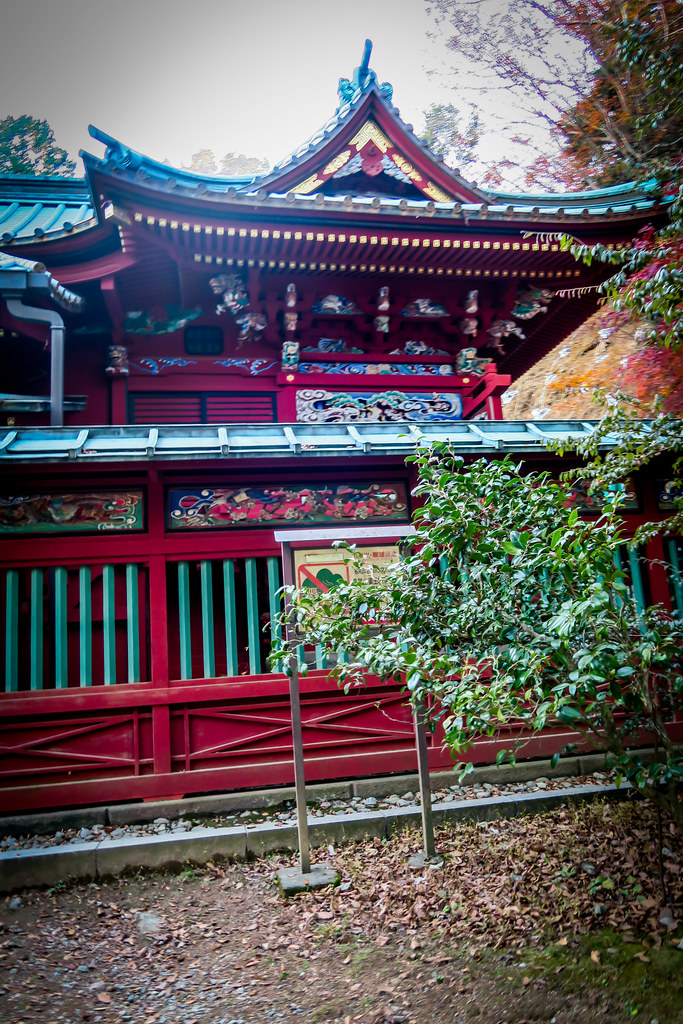

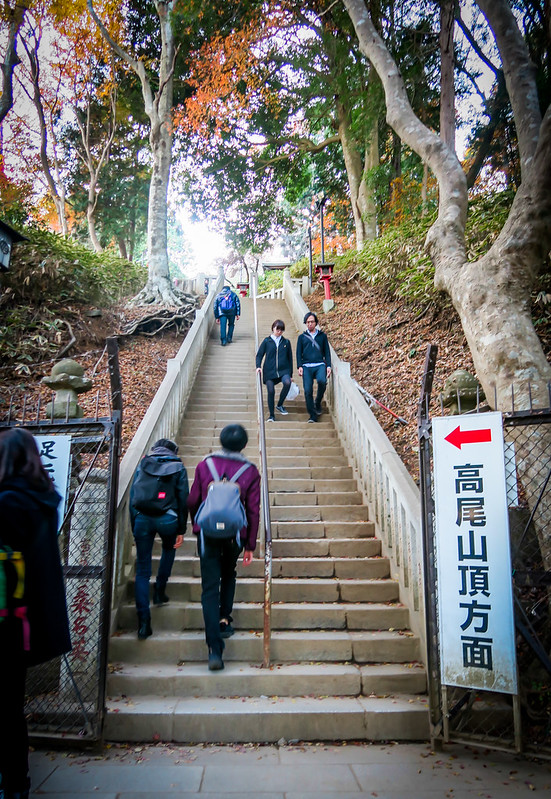
On tomorrow’s post, from Izuna Gongen-do Hall, I go up to the next flight of stairs to head to Okunoin Fudo-do Hall.
